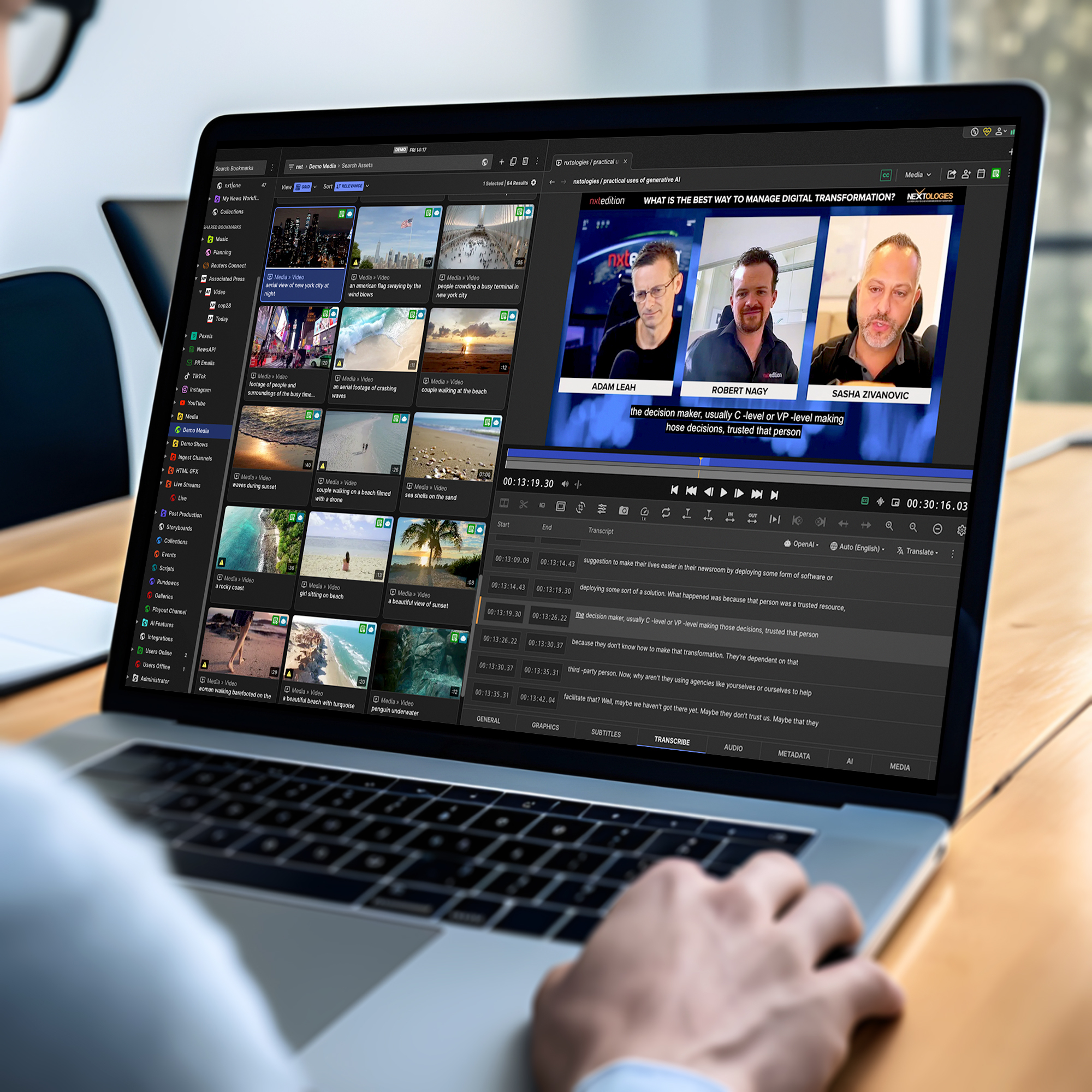How can AI streamline operations, enhance content delivery and revolutionize viewer engagement?

Subscribe to NCS for the latest news, project case studies and product announcements in broadcast technology, creative design and engineering delivered to your inbox.
The age of AI is here.
Bringing AI into newsrooms is always going to be a delicate balancing act. On the one hand, you want all the advantages it can bring teams, but on the other hand, there are legal and ethical concerns, particularly around generative AI.
Much has already been said that AI is best as an assistant in the business of making stories, and there is certainly a lot of scope to implement that in the immediate future.
One of the more exciting developments in AI is the open-source projects that OpenAI has pioneered with the “Whisper” speech-to-text ASR (Automatic Speech Recognition). Because it is open source, essentially, the software is free.
Meta has followed this trend, with Mr. Zuckerberg bringing their two AI divisions together and releasing all their work to the open-source community.
How can this be monetized? OpenAI charges for its cloud infrastructure, while Meta bakes it deep into all the services they provide. This approach signifies a shift towards developing AI and seamlessly integrating it into their products and services. Meta is diligently establishing an infrastructure to underpin extensive AI mobilization during this effort.
With an impressive inventory of 650,000 GPUs on order, Meta is currently engaged in constructing a robust system, positioning itself as a formidable player in the technology sector.
But what does this all mean for a broadcast newsroom?
Our approach at nxtedition is to become a platform for these open-source AIs and free them from the expensive and recurring cloud infrastructure costs.
As private cloud microservice infrastructure providers, our nxtEngines have GPU acceleration and this already deployed on-premise infrastructure allows us to run open-source AIs with no additional cost to the end client.
For example, we installed Whisper for speech-to-text and LibreTranslate for translation. Suddenly, the newsroom can transcribe and translate all the content that comes in, in 180 languages, with no cloud bill at the end of the month. At night and on weekends, the system can process the entire archive with speech-to-text and then index it for search, unlocking that content for no extra cost.
Multi-language subtitles can be generated and applied to clips, all using this open-source AI approach, which gives tremendous value in time, agility, and speed for getting stories out the door without time-consuming workflow bottlenecks.
We are currently working on integrating LLama, Meta’s version of OpenAI’s GPT LLM. Again, this is open source and will allow us to use multi-modal AI for social media posts. We often hear that writing titles and descriptions for social posts is a workflow bottleneck, so we take the clips transcription and ask LLama to write us 10 titles and a description of the Whisper transcription. Because it is explicit in its request, we get very few hallucinations in the output, and a human can select and edit the output before it’s sent.
Again all this is at no extra monthly cost because it is running on premise. By implementing this open source approach we can provide newsrooms with AI solutions that have a predictable cost, protecting them from “cloudflation” while providing the very “best in breed” of open source AIs to assist the day to day operation of the newsroom in a pragmatic way.
Subscribe to NCS for the latest news, project case studies and product announcements in broadcast technology, creative design and engineering delivered to your inbox.






tags
Adam Leah, Artificial Intelligence, cloud, Meta, nxtedition, open source
categories
Broadcast Automation, Broadcast Engineering, Heroes, Thought Leadership, Voices